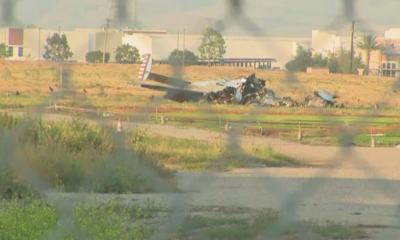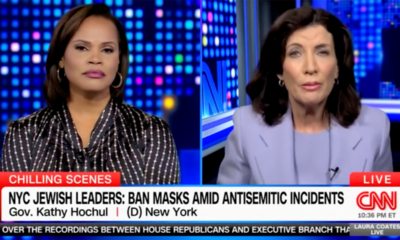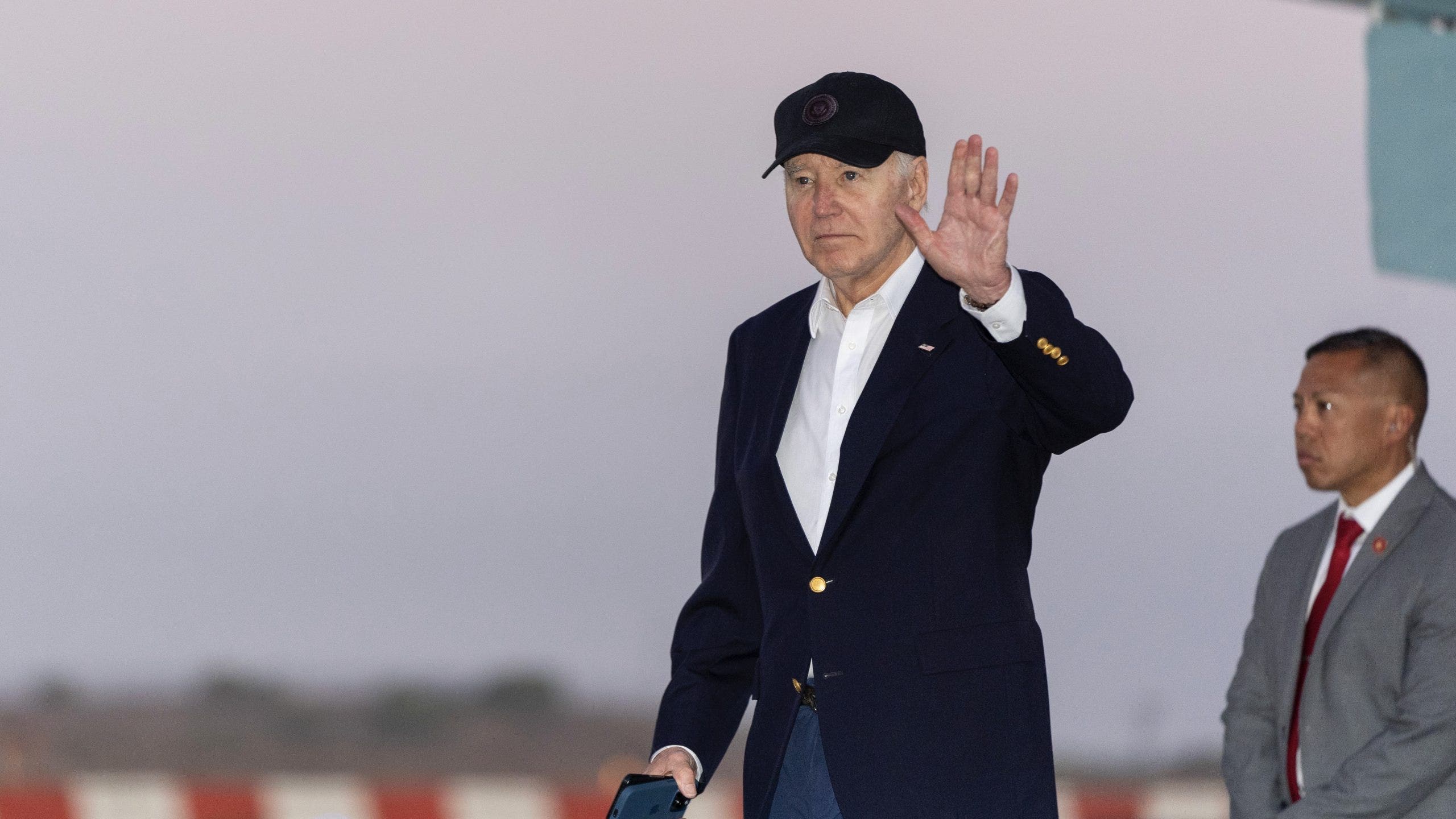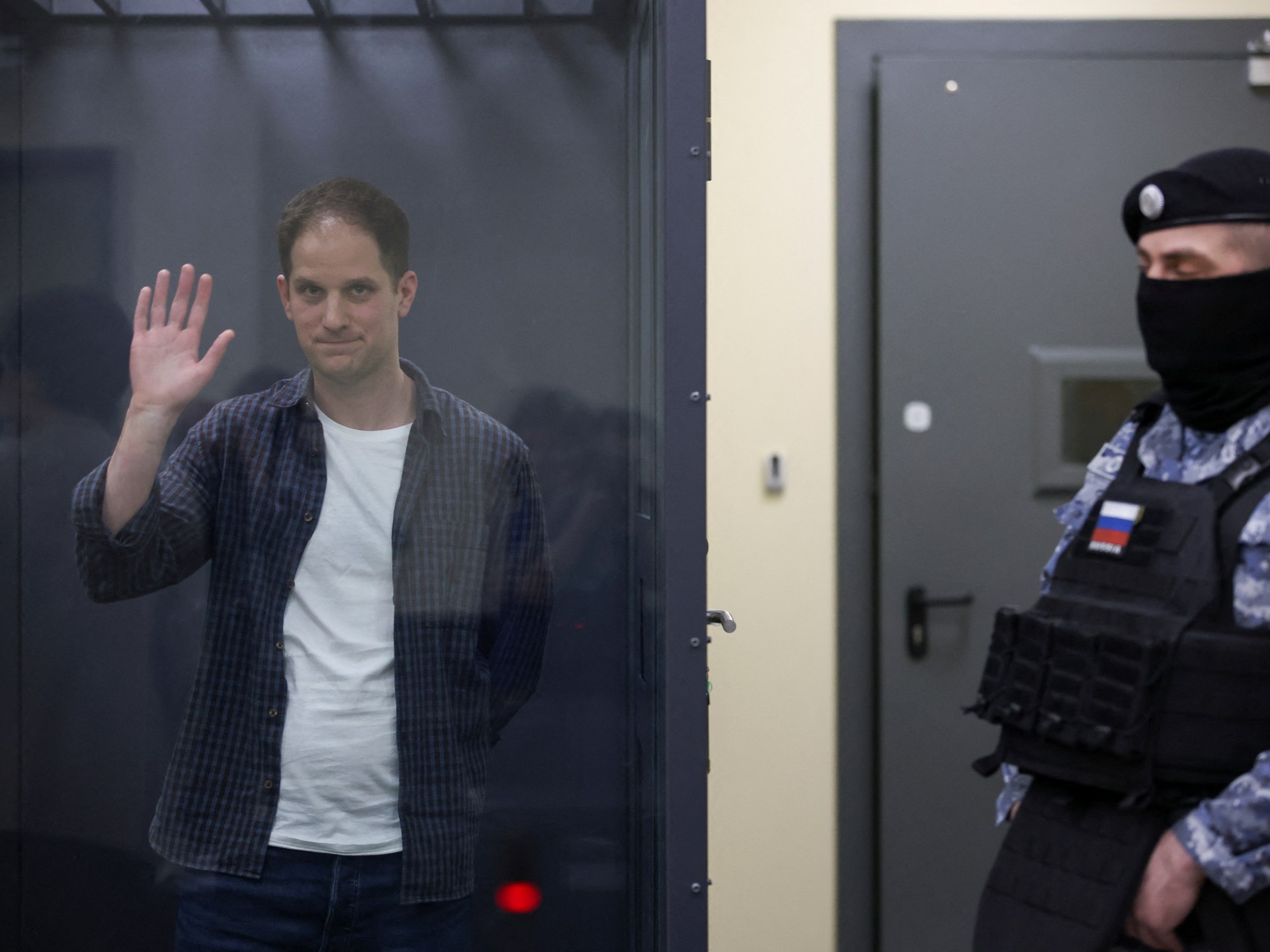New York
Mayor Adams’s Ability to Freely Spend Money on Migrants May Be Curtailed

As the migrant situation worsens in New York City, Mayor Eric Adams is in danger of forfeiting his ability to quickly spend hundreds of millions of dollars on the crisis using his emergency powers.
The city comptroller, Brad Lander, has warned the city that he may curtail the city’s power to enter emergency contracts — a power granted by his office — to deal with the influx.
He said that with the crisis now 18 months old, it was “no longer an unexpected situation that merits the broad suspension of due diligence processes to ensure that city funds are being spent wisely and with integrity.”
Mr. Lander also informed the city, in a letter sent Friday, that he was launching an audit to determine how the city came to award a no-bid $432 million migrant-services contract to DocGo.
It describes itself as a medical services firm. But multiple investigations and various media reports, including in The New York Times, revealed troubling information about the company’s performance, and lack of experience handling asylum seekers. Mr. Lander subsequently denied approval of the DocGo deal — the first time he’s ever rejected an emergency city contract.
The contract took effect on May 5, but the comptroller’s office did not see it until Aug. 16. It then discovered several flaws in the procurement process, as well as inadequate evidence that the company’s subcontractors were properly screened.
The contract, which was reviewed by The Times, also included provisions that seemed structured to benefit DocGo. In one example, the company was authorized to bill taxpayers $170 per hotel room per night to house migrants — many of them in upstate motels that generally cost a lot less — and then profit from the difference.
“There are just too many outstanding questions and concerns about this contract and this contractor,” Mr. Lander said in an interview. “The goal here is real-time oversight and accountability, not a subsequent audit that identifies problems later.”
The ramped-up scrutiny comes as DocGo’s chief executive, Anthony Capone, quit on Friday, a day after admitting to the Albany Times Union that his resumes and bios falsely claimed a graduate degree in artificial intelligence, sparking another tumble in the company’s already lagging stock price.
A spokesman for the mayor, Charles Kretchmer Lutvak, warned of devastating consequences for asylum-seeking families if the comptroller revokes fast-track approval for emergency migrant services contracts.
“If the comptroller decides to put politics over the welfare of people seeking asylum and declare this crisis is no longer an emergency, asylum seekers will have to sleep on the street while they wait for the comptroller to approve city contracts,” Mr. Lutvak said.
Despite the questions surrounding DocGo, Mayor Adams had signaled his intention to move forward with the contract, insisting Mr. Lander had already given him the green light. The mayor has the power to unilaterally approve the contract over the comptroller’s objections.
Mr. Lander, who is making his plans public on Monday, signaled he would not block payments to DocGo, but would instead begin a “real-time audit” — another tool he’s never used before — to ensure DocGo is meeting its contractual obligations and the city isn’t paying bogus bills.
“We wouldn’t have to wait for what they submit to” the housing agency, Mr. Lander said, citing a particular contract provision that empowers him to immediately inspect the company’s financial records.
There is still an urgent need to give city agencies spending flexibility to care for migrants arriving in New York City by the thousands each month. But Mr. Lander said the crisis is no longer an unanticipated emergency, or clear grounds for suspending procurement rules designed to drive down the cost of caring for migrants.
“The DocGo contract in particular raises real serious concerns for us about whether that blanket prior approval is being treated as a blank check,” Mr. Lander said in the interview.
If he does revoke the broad prior approval, Mr. Lander said his office would have to vet agencies’ proposed use of emergency procurement powers on a case-by-case basis. A contract the size and scope of DocGo’s, for example, would have to be opened up to competitive bidding, he added.
Such a move would not affect the city’s hospital system, a public benefit corporation that has numerous emergency contracts in place to handle the migrant influx. But Mr. Lander said a revocation would impact all agencies directly under the mayor, and looking for contracts for asylum seeker services; some small contracts, such as those under $1.5 million, would still be exempt from competitive bidding rules.
“If we were to revoke the blanket prior approval — yes, then each of those agencies would just need to approach us for approval of any individual contract,” he said.
DocGo officials did not respond on Sunday to a request for comment.
The company’s contract with the city’s Department of Housing Preservation and Development, which has not been made public, calls for DocGo to provide some of its subcontracted services with no markup. For example, laundry and food service are “billed at actual cost,” with laundry charges capped at $270,000 a month, and three meals costing no more than $33 per person each day, the contract says.
But DocGo is allowed to turn a tidy profit from its largest single monthly expense: the hotel rooms housing the migrants. Under the contract, the city is required to pay the company a flat $170 per room per night, so the contractor can keep the difference between what it pays for the hotel and the amount it gets from the city; the city has to pay for microwaves and refrigerators if they’re not included in the rooms, the contract says.
In Albany, DocGo is paying approximately $100 a night for rooms at the Holiday Inn and about $80 a night for rooms at the Ramada Plaza, the hotel where a Times reporter witnessed migrants being threatened by DocGo’s security team, sources familiar with the rates say.
The housing agency said it shouldn’t be assumed that DocGo is profiting off the $170 rate because slightly more than half of the migrants in its care are staying in hotels in New York City, where rates tend to be higher, and establishing a set rate allows the city to avoid unpredictable spikes.
Allowing DocGo to rake money off the top of the hotel rooms it provides to migrants may help explain why the company told investors last month that it is counting on about $300 million in net revenue from its no-bid city contract and projects a gross profit margin exceeding 35 percent through the end of this year.
The city says that there are about 4,200 migrants in DocGo’s care in New York City and upstate. With an estimated $70 million owed to DocGo so far, that works out to about $16,700 per migrant going to DocGo so far under the contract, which took effect May 5.
A city housing spokesman said the $16,700 doesn’t account for migrants who have already left the hotels and pointed out that the cost is far less than the $383 per night the mayor cited in early August as the expense of caring for migrants in the city.
Even so, the contract isn’t meeting all the migrants’ needs. In interviews and accounts in news stories, migrants and their advocates have complained they aren’t getting needed medical care, even though the company and City Hall have said repeatedly that medical care is included in the contract.
The fine print, however, shows that DocGo is only required to provide remote telehealth appointments, and they’re capped at 600 visits, at a total cost of no more than $39,000, per month.
Any on-site medical care first must be ordered by the city and, with a month’s notice, provided or coordinated by DocGo only after mutual agreement with the company, and assuming it has the “ability to provide it,” the contract says. The housing agency said DocGo has been providing on-site medical care at upstate sites where there are migrant families with children.

New York
Transcript of Trump Manhattan Trial, May 30, 2024

-
Jury Deliberation Re-charge
SUPREME COURT OF THE STATE OF NEW YORK
COUNTY OF NEW YORK CRIMINAL TERM
-
-
PART: 59
Χ
THE PEOPLE OF THE STATE OF NEW YORK,
-against-
DONALD J. TRUMP,
DEFENDANT.
BEFORE:
Indict. No.
71543-2023
CHARGE
4909
FALSIFYING BUSINESS
RECORDS 1ST DEGREE
JURY TRIAL
100 Centre Street
New York, New York 10013
May 30, 2024
HONORABLE JUAN M. MERCHAN
JUSTICE OF THE SUPREME COURT
APPEARANCES:
FOR THE PEOPLE:
ALVIN BRAGG, JR., ESQ.
DISTRICT ATTORNEY, NEW YORK COUNTY
One Hogan Place
New York, New York 10013
BY:
JOSHUA STEINGLASS, ESQ.
MATTHEW COLANGELO,
ESQ.
SUSAN HOFFINGER, ESQ.
CHRISTOPHER CONROY, ESQ.
BECKY MANGOLD, ESQ.
KATHERINE ELLIS, ESQ.
Assistant District Attorneys
BLANCHE LAW
BY:
TODD BLANCHE, ESQ.
EMIL BOVE, ESQ.
KENDRA WHARTON, ESQ.
NECHELES LAW, LLP
BY: SUSAN NECHELES, ESQ.
GEDALIA STERN, ESQ.
Attorneys for the Defendant
SUSAN PEARCE-BATES, RPR, CSR, RSA
Principal Court Reporter
LAURIE EISENBERG, RPR, CSR
LISA KRAMSKY
THERESA MAGNICCARI
Senior Court Reporters
Susan Pearce-Bates, RPR, CCR, RSA
Principal Court Reporter
New York
Transcript of Trump Manhattan Trial, May 29, 2024

SUPREME COURT OF THE STATE OF NEW YORK
COUNTY OF NEW YORK CRIMINAL TERM
-
THE PEOPLE OF THE STATE OF NEW YORK,
PART: 59
Indict. No.
71543-2023
CHARGE
-against-
DONALD J. TRUMP,
DEFENDANT.
BEFORE:
4815
FALSIFYING BUSINESS
RECORDS 1ST DEGREE
JURY TRIAL
X
100 Centre Street
New York, New York 10013
May 29, 2024
HONORABLE JUAN M. MERCHAN
JUSTICE OF THE SUPREME COURT
APPEARANCES:
FOR THE
PEOPLE:
ALVIN BRAGG, JR.,
ESQ.
DISTRICT ATTORNEY, NEW YORK COUNTY
One Hogan Place
New York, New York 10013
BY:
JOSHUA STEINGLASS, ESQ.
MATTHEW COLANGELO,
ESQ.
SUSAN HOFFINGER, ESQ.
CHRISTOPHER CONROY, ESQ.
BECKY MANGOLD, ESQ.
KATHERINE ELLIS, ESQ.
Assistant District Attorneys
BLANCHE LAW
BY:
TODD BLANCHE, ESQ.
EMIL BOVE, ESQ.
KENDRA WHARTON, ESQ.
NECHELES LAW, LLP
BY: SUSAN NECHELES, ESQ.
Attorneys for the Defendant
SUSAN PEARCE-BATES, RPR, CSR, RSA
Principal Court Reporter
LAURIE EISENBERG, RPR, CSR
LISA KRAMSKY
THERESA MAGNICCARI
Senior Court Reporters
Susan Pearce-Bates,
RPR, CCR, RSA
Principal Court Reporter
New York
Critics Fault ‘Aggressive’ N.Y.P.D. Response to Pro-Palestinian Rally

Violent confrontations at a pro-Palestinian rally in Bay Ridge, Brooklyn, on Saturday reflected what some local officials and protest organizers called an unexpectedly aggressive Police Department response, with officers flooding the neighborhood and using force against protesters.
At the rally, which drew hundreds of demonstrators, at least two officers wearing the white shirts of commanders were filmed punching three protesters who were prone in the middle of a crosswalk. One officer had pinned a man to the ground and repeatedly punched him in the ribs, a 50-second video clip shows. Another officer punched the left side of a man’s face as he held his head to the asphalt.
The police arrested around 40 people who were “unlawfully blocking roadways,” Kaz Daughtry, the department’s deputy commissioner of operations, said on social media on Sunday.
Mr. Daughtry shared drone footage of one person who climbed on a city bus, “putting himself and others in danger.” The Police Department, he wrote, “proudly protects everyone’s right to protest, but lawlessness will never be tolerated.”
Neither Mr. Daughtry nor the police commented on the use of force by officers. A spokeswoman for Mayor Eric Adams did not immediately respond to a request for comment about the police response. The Police Department’s patrol guide states that officers must use “only the reasonable force necessary to gain control or custody of a subject.”
Bay Ridge has a significant Arab American population and hosts demonstrations in mid-May every year to commemorate what Palestinians call the Nakba, or “catastrophe” — when hundreds of thousands of Palestinians fled or were forced from their homes during the war that led to Israel’s founding in 1948.
Andrew Gounardes, a state senator and a Democrat who represents the area, said local politicians had been in touch with the commanding officer of the 68th police precinct before the preplanned protest and said there had been no indication that there would be such a heavy police response. He called the videos he saw of the events “deeply concerning.”
“It certainly seems like the police came ready for a much more aggressive and a much more confrontational demonstration than perhaps they had gotten,” he added.
Justin Brannan, a Democrat who is the city councilman for the area, said the protest was smaller than last year’s but that officers had come from all over the city to police it. He said their approach appeared to be directed by 1 Police Plaza, the department headquarters in Manhattan.
“These were not our local cops. Clearly, there was a zero-tolerance edict sent down from 1PP, which escalated everything and made it worse,” Mr. Brannan said.
“I’m still waiting on information and details about the arrests that were made,” he added, “but from my vantage point, the response appeared pre-emptive, retaliatory and cumulatively aggressive.”
The Republican state assemblyman whose district includes parts of Bay Ridge, Alec Brook-Krasny, had a different perspective. He said an investigation would determine whether the officers’ actions were warranted, but he said some protesters were “breaking the law” by refusing to clear the street.
“I think that those bad apples are really hurting the ability of the other people to express their opinions,” Mr. Brook-Krasny said.
Some local residents supported the police and said they were tired of the protests’ disruptive impact. “Enough is enough,” said Peter Cheris, 52, a 40-year resident of Bay Ridge, who said he had viewed the videos of the protest. “If you’re going to break the law, you deserve it,” he said.
Donna Lieberman, the executive director of the New York Civil Liberties Union, singled out the presence of the Police Department’s Strategic Response Group, a unit that is sometimes deployed to protests and has been the subject of several lawsuits brought by the civil liberties union and other groups.
The police unit’s handling of the demonstration “was a violation of New Yorkers’ right to speak out and risks chilling political expression,” Ms. Lieberman said in a statement. “N.Y.C.L.U. protest monitors witnessed violent arrests, protester injuries, and even arrests of credentialed members of the press.”
She added: “The continual pattern of N.Y.P.D. aggression against pro-Palestine demonstrators raises important questions about the city’s disparate treatment of speakers based on their message.”
Abdullah Akl, an organizer with Within Our Lifetime, the pro-Palestinian group that organized the protests, said the response took organizers aback, particularly for a demonstration that occurs every year in Bay Ridge and is known to be frequented by families with children.
“It was really an unusual and unprecedented response,” Mr. Akl said.
He said he witnessed two men being pushed to the ground. One of them can be seen in a video with blood streaming down the side of his face. Nerdeen Kiswani, chair of Within Our Lifetime, said three protesters — including the two who can be seen being punched — were treated for their injuries at hospitals.
The Police Department has arrested hundreds of demonstrators since street protests began shortly after the Hamas attack on Israel on Oct. 7 and Israel’s subsequent invasion of Gaza. The protests have been largely peaceful, with few injuries or violent clashes.
In a turning point, on April 30 officers cleared Hamilton Hall at Columbia University, which had been occupied by protesters for 17 hours. Many officers showed restraint during the arrests, though a handful were filmed pushing and dragging students as they removed them from the building.
On Sunday, Ms. Lieberman said police response to the protests in Bay Ridge underscored the importance of implementing the terms of a $512,000 settlement the civil liberties union and the Legal Aid Society reached with the city this month. The settlement set new terms for how the Police Department manages protests, creating a tiered system that dictates how many officers can be sent to demonstrations and limits the use of the Strategic Response Group. It will take years to put into practice.
The settlement is one of several that stemmed from the George Floyd racial justice protests in 2020. Last year, the city agreed to pay $13.7 million to settle a class-action lawsuit that claimed unlawful police tactics had violated the rights of demonstrators in Manhattan and Brooklyn. In March, the city agreed to pay $21,500 to each of roughly 300 people who attended another Black Lives Matter protest in 2020 in the Bronx. Those people were penned in by the police, then charged at or beaten with batons, according to a legal settlement.
Andy Newman and Camille Baker contributed reporting.
-

 News1 week ago
News1 week agoRead Justice Clarence Thomas’s Financial Disclosures for 2023
-

 Politics1 week ago
Politics1 week agoNewson, Dem leaders try to negotiate Prop 47 reform off California ballots, as GOP wants to let voters decide
-

 World1 week ago
World1 week ago‘Bloody policies’: Bodies of 11 refugees and migrants recovered off Libya
-

 Politics1 week ago
Politics1 week agoGun group vows to 'defend' Trump's concealed carry license after conviction
-

 Politics1 week ago
Politics1 week agoShould Trump have confidence in his lawyers? Legal experts weigh in
-

 Politics6 days ago
Politics6 days agoGOP releases Jan. 6 clip of Pelosi saying 'I take responsibility' as she discussed National Guard absence
-

 Movie Reviews1 week ago
Movie Reviews1 week ago‘Darkest Miriam’ Review: Britt Lower in a Marvel of a Drama About a Young Librarian’s Loves and Fears
-

 World1 week ago
World1 week agoOrban party loses major support in Hungary's EU election

















